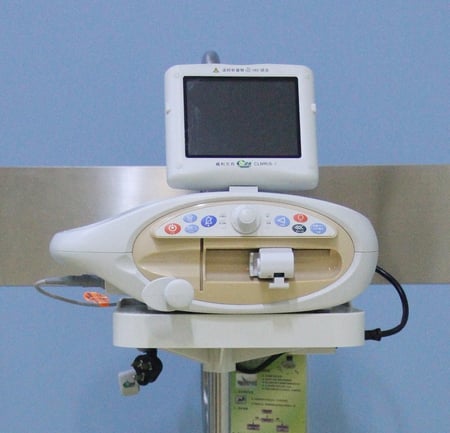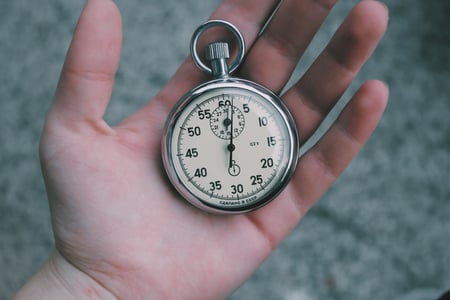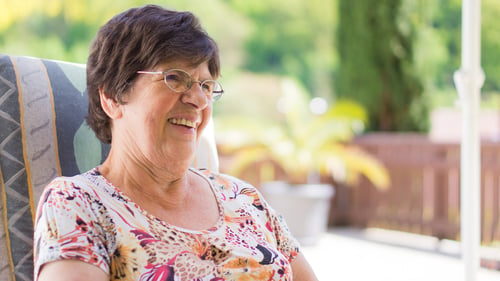Unsedated Colonoscopy: Surely You Jest
by Larissa Biggers, on September 21, 2018
Why would you have a sedation-free colonoscopy, when the norm is sleeping through the procedure and having no recollection of it?
You Wouldn't Be the Only One
First of all, unsedated colonoscopy is not as unusual as you think. Roughly half of the colonoscopies performed in Europe do not use sedation. In Finland, for instance, only 6% of colonoscopies are performed with sedation. Figures in Asia vary widely, but in China, just 18% of colonoscopy patients are sedated.
Colonoscopy was originally developed almost 50 years ago as an unsedated procedure. Sedation was introduced as a reaction to a small number of incomplete colonoscopies that occurred due to patient anxiety and discomfort. Today in the U.S., sedation is the norm for all colonoscopies. 99% of Americans who get a colonoscopy are sedated. But do they need to be? Is it even safe?
Safety
While sedation can erase memories of discomfort and anxiety, it comes with its own set of risks. Because it dulls response to pain, it prevents patients from providing feedback and increases the likelihood of adverse events. With Propofol (i.e., deep sedation) especially, there is a higher risk of traumatic injuries such as perforation and splenic injury. It has been linked to aspiration and aspiration pneumonia because of diminished airway reflexes.

Cost
While it can be fatal, thanks to colonoscopy, colon cancer is preventable and treatable. But for those who are un- or underinsured, the cost of a sedated colonoscopy can be prohibitive. Propofol can add $600 to $2000 per procedure, mainly because an anesthesiologist or nurse anesthetist is required to administer it. In fact, the anesthesiologist’s fee is substantially more than the colonoscopist’s, and not all insurance companies cover it.
Time
For every patient who has an unsedated colonoscopy, an endoscopy unit can save an hour. A study comparing multiple aspects of unsedated and sedated colonoscopies found that total discharge times for unsedated patients averaged 20.7 minutes; for sedated patients it was 83 minutes. This time savings frees up physicians and staff to perform additional duties and procedures.

And what about the patient’s time? 14% of patients surveyed cited the need for an escort / driver and time off after the procedure as the reasons for not following through with a recommended colonoscopy; thus, sedation can be a significant barrier to undergoing a life-saving procedure.
Anxiety
David Holzman, who documented his unsedated colonoscopy, noted that, “I’m not particularly pain tolerant. But [I was] primed not to expect pain. And studies show that expectations have a profound influence on pain, or lack thereof.”
Interestingly, in a study on the feasibility of unsedated colonoscopy, unsedated patients were less anxious prior to the procedure than patients who would receive sedation. Further, it found that post-procedure, unsedated patients were willing to return to the same physician for additional colonoscopies at the same rate as patients who received sedation.
Perhaps that’s because unsedated colonoscopy is not painful for the majority of patients. Holzman notes that his discomfort was minimal, “hitting maybe 3-max out of 10 on the pain-meter for seconds at a time here and there, and otherwise never going beyond 2 out of 10, comparable, perhaps, to a very mild cramp.” And a recent Norwegian survey indicated that increasing the use of sedation does not necessarily lead to lower rates of painful colonoscopy.
ADR
According to one CRC screening advocacy group, adenoma detection rate (ADR) “is critical for a quality colonoscopy and for colon cancer prevention.” For every one percent increase in ADR, the risk of developing colon cancer in the next year decreases by three percent. It makes sense; when precancerous polyps are removed, they cannot develop into cancer.
In a study of ADR in unsedated colonoscopy, researchers found that in unsedated patients, ADR was greater than in sedated patients, no matter the age, gender, or BMI. Results showed that “the detection of adenomas is enhanced when patients are awake, engaged, and observing the performance of their colonoscopy. These data encourage use of unsedated colonoscopies to reduce interval cancers, complications associated with moderate and deep sedation, recovery time, and return to full activity.”
That pretty much says it all.


